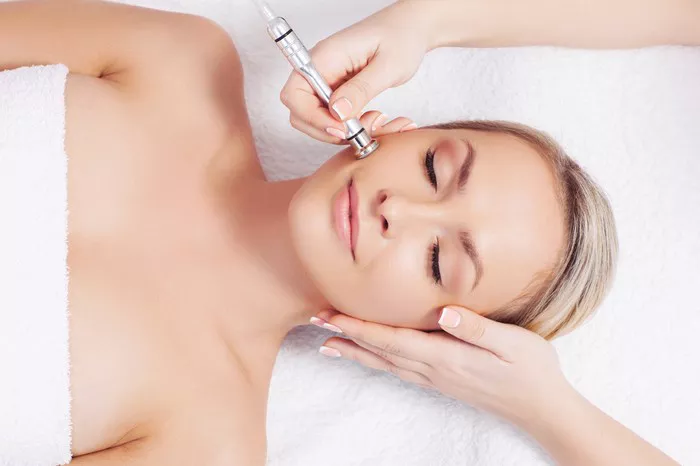Microdermabrasion is a popular cosmetic procedure that exfoliates the skin, helping to improve its texture and appearance. It is a non-invasive treatment that can address a range of concerns, including dullness, fine lines, hyperpigmentation, and acne scars. If you have scheduled a microdermabrasion session or are considering it, understanding what to expect after the treatment is essential. In this article, we will provide a comprehensive guide to help you navigate the post-microdermabrasion phase and achieve optimal results.
Immediate Effects
After a microdermabrasion treatment, you may notice some immediate effects on your skin. These effects can vary depending on the intensity of the treatment, your skin type, and individual factors. Here are some common immediate effects to expect:
- Redness: Your skin may appear slightly red or flushed immediately after the treatment. This is a normal response and typically subsides within a few hours. In some cases, the redness may persist for a day or two, especially if the treatment was more aggressive or if you have sensitive skin.
- Sensation: You may experience a mild tingling or warm sensation on the treated areas. This is a result of increased blood flow and should diminish shortly after the procedure.
- Tightness: Your skin may feel slightly tight or dry after microdermabrasion. This is because the exfoliation process removes the outermost layer of dead skin cells, revealing fresher skin underneath. Applying a moisturizer can help alleviate this sensation.
Post-Treatment Care
To ensure the best results and minimize any potential side effects, it is crucial to follow proper post-treatment care. Here are some important guidelines to keep in mind:
- Avoid Sun Exposure: Your skin may be more sensitive to sunlight after microdermabrasion. It is important to protect your skin by avoiding direct sun exposure, especially during the first few days following the treatment. If you must go outside, apply a broad-spectrum sunscreen with at least SPF 30 and wear a wide-brimmed hat.
- Hydrate Your Skin: Moisturizing is key to maintaining the health and hydration of your skin after microdermabrasion. Choose a gentle, hydrating moisturizer and apply it regularly, especially if you experience any tightness or dryness. Look for products that are fragrance-free and non-comedogenic to prevent clogged pores.
- Avoid Harsh Products: For a few days post-treatment, avoid using harsh or abrasive skincare products. This includes exfoliants, scrubs, and retinol-based products. Stick to gentle cleansers and moisturizers to allow your skin to heal and recover.
- Stay Hydrated: Drinking an adequate amount of water helps to hydrate your skin from within. It promotes healing, improves skin elasticity, and supports overall skin health. Aim to drink at least eight glasses of water per day.
- Be Gentle with Your Skin: During the first few days after microdermabrasion, be gentle when cleansing and drying your skin. Use lukewarm water and pat your skin dry with a soft towel. Avoid rubbing or scrubbing the treated areas.
- Avoid Makeup and Facial Treatments: It is best to avoid applying makeup or undergoing additional facial treatments immediately after microdermabrasion. Give your skin time to heal and recover before reintroducing any potential irritants.
Expected Results
While you may notice some immediate improvements in your skin’s texture and appearance, the full benefits of microdermabrasion usually become more apparent over time. With each subsequent treatment, you can expect cumulative improvements in the following areas:
- Smoother Texture: Microdermabrasion helps to remove dead skin cells and unclog pores, resulting in a smoother skin texture. Over time, you may notice a reduction in roughness, bumps, and unevenness.
- Brighter Complexion: The exfoliation process of microdermabrasion can reveal brighter and more radiant skin. With regular treatments, you may notice an improvement in skin tone and a reduction in dullness or discoloration.
- Reduction of Fine Lines and Wrinkles: Microdermabrasion stimulates collagen production, which can help minimize the appearance of fine lines and wrinkles. Over time, you may notice a smoother and more youthful-looking complexion.
- Improved Hyperpigmentation: Microdermabrasion can be effective in reducing the appearance of hyperpigmentation, such as sunspots or age spots. With consistent treatments, you may see a more even skin tone and a reduction in dark spots.
- Diminished Acne Scars: For individuals with acne scars, microdermabrasion can help improve their appearance. It can smooth out rough texture and reduce the visibility of shallow acne scars over time.
Consultation with a Skincare Professional
To ensure the best results and address any concerns you may have, it is advisable to consult with a skincare professional before and after your microdermabrasion treatments. They can assess your skin, provide personalized recommendations, and monitor your progress. A skincare professional can also determine the ideal frequency of treatments based on your specific skin type and concerns.
Conclusion
Microdermabrasion is an effective exfoliation technique that can deliver numerous benefits for the skin. Understanding what to expect after microdermabrasion and following proper post-treatment care are essential for achieving optimal results. Redness, tightness, and sensitivity immediately after the treatment are normal and usually subside within a few hours. Following post-treatment guidelines such as sun protection, hydration, and gentle skincare practices will help promote healing and maximize the benefits of microdermabrasion. With regular treatments and appropriate aftercare, you can expect to see improvements in skin texture, brightness, fine lines, hyperpigmentation, and acne scars. Remember to consult a skincare professional for personalized advice and guidance throughout your microdermabrasion journey.


